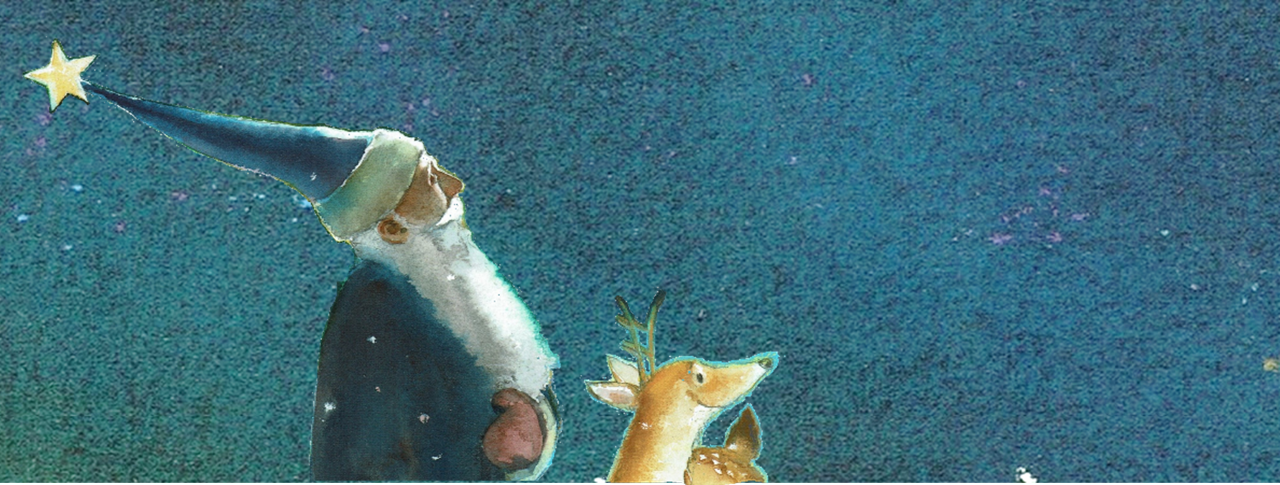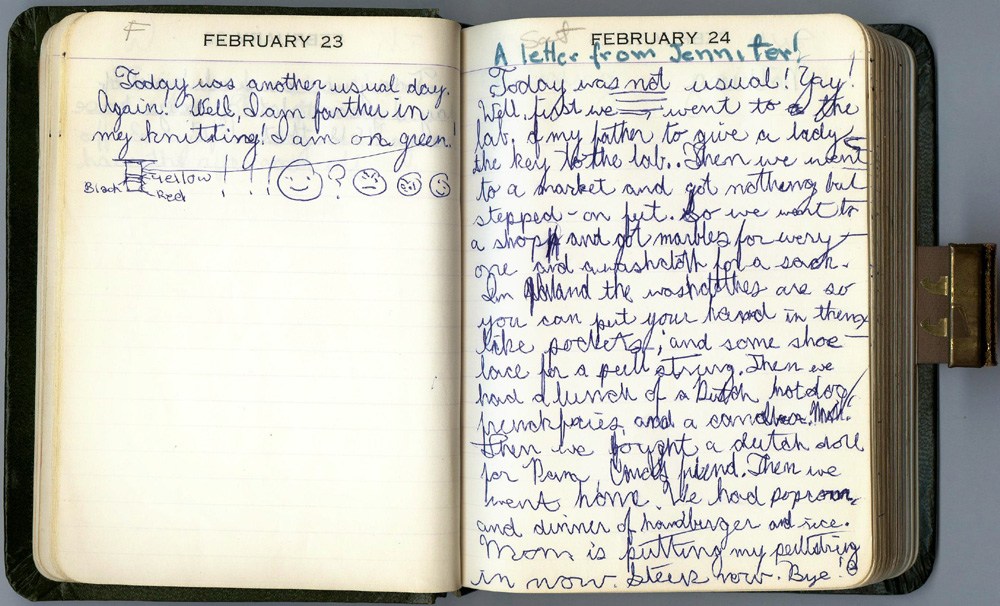
The Christmas Magic

Illustrated by Jon J Muth (Scholastic Press, 2009)
Far, far North, when the nights are longest and the stars shine brightest, Santa begins to prepare for his big night of giving. Oppenheim Toy and Book Portfolio Platinum Award Winner – Best Book. Ages 3 and up.
What is the magic that makes reindeer fly, and where does it come from? These are the questions I was pondering as the first words of this book came to me, needing to be written down. I wondered how Santa feels about all of this — perhaps he too finds the magic to be quite mysterious and wondrous. Santa loves all children every day of the year, but only once a year is he given the power to share that love.
Then he knows that the Christmas magic will soon be here.”
Reviews and Notices
2009 Oppenheim Toy Portfolio Platinum Award Winner
Publishers Weekly (starred review)
A sedulous and quirky Santa, who sports bunny slippers and feels a “tingling in his whiskers” (his mustache sticks out like the hands of a clock at 10:10) as Christmas nears, prepares for the arrival of the holiday. He calls his reindeer home and tends to them, then shines his sled, carefully selects toys and climbs a stepladder to tie up his enormous pack. Muth’s idyllic, wintry watercolors and pastels set the mood as “the night begins to thrum with magic, the kind of magic that makes reindeer fly.” Readers, like Santa, will feel the magic, too.
The Horn Book
“Far, far north, where the reindeer are, there is a snug little house with a bright red door. And in that house lives Santa Claus.” As soon as he “feels a tingling in his whiskers,” Santa (casually dressed in short blue pants, a gray-and-white striped shirt, a brown coverall apron, and bunny slippers) begins preparations for the big event. He calls in the reindeer, polishes to a shine his red sled, and consults his book, carefully pairing particular toys with deserving children. Thompson’s quiet text captures the story’s breath-held hush of anticipation leading to “the Christmas magic”: “It has come at last, as it always has, and always will.” Muth’s tranquil watercolor and pastel illustrations displaying the snowy, remote setting subtly incorporate familiar Christmas symbols and motifs. A perfect way to settle overexcited young ones for Christmas Eve bedtime. ELISSA GERSHOWITZ
Kirkus Reviews
Here’s a Santa Claus unlike any other. He lives with just a young reindeer companion and a cat. He has no elves as helpers but gathers the toys from a collection in his house and loads the sleigh himself. He wears a blue suit with a golden star at the end of his pointed hat. The spare text focuses on the Christmas magic drawing near, and the final spread with Santa’s sled rocketing skyward seems to symbolize the essence of that magical power. Muth’s muted watercolor illustrations are an excellent match for the lyrical text, with the soft grays, deep, midnight blues and the blue of Santa’s suit matching its melancholy quality. For those who find the jolly traditional Santa overbearing, this quieter approach may be a soothing alternative.
School Library Journal
Christmas magic will soon arrive. Readers see the white-haired gent taking care of all the mundane chores: grooming the reindeer, darning his warm socks, shining the sleigh, and selecting and packing the gifts. When all is ready, the magic comes and Santa flies off to share it with the world. Muth’s haunting watercolor and pastel illustrations bring the simple story to magical life. Santa’s bunny slippers are a particularly charming touch. Best for one-on-one or small-group sharing, this gentle and lovely book is sheer enchantment.–Mara Alpert, Los Angeles Public Library
The New York Times Book Review
from article “Snow Zone,” November 6, 2009, by David Barringer
After cranky creatures and existential storms, behold the uncomplicated gladness of the season. Here are the idealized colors of Christmas, in “The Christmas Magic,” by Lauren Thompson, with pictures by Jon J Muth, where the watercolor illustrations are glowing and pure and nostalgic. Tree boughs are light in cottony mittens of snow, and in the middle of a snowy field glows a humble yellow house with a red door and a smoking chimney: Santa’s house. The story, however, brings a twist to tradition.
This Santa differs from the usual rotund elf: he is thinner, more human, with a pointy mustache. With Christmas on the way, Santa, like a gentleman farmer, gets to work. He calls the reindeer, feeds them, struggles to push open a huge barn door and readies the sleigh in the barn, which, with a workbench and tools, looks like a garage. Santa oils boots, knits stockings and trims his mustache. He is a bachelor living alone in the woods — no Mrs. Claus, no elves, no factory. He is an at-home Claus, elf-employed and as content as Thoreau.
It’s a charming conceit, this stripped-down Santa. If he were to steer his sleigh into a nearby village, hop out and distribute toys, the conceit would be taken to a pleasant kind of logical end. The “magic,” however, grabs the reins and returns the story to a more familiar course. There is the impossibly large sack of toys for every child in the world, and the sleigh, pulled by flying reindeer, rising into the starry sky. The story ends with liftoff.
It’s a curious tale. The prose is as spartan as this new Santa, and the watercolor art is inviting, rich and warmly wintery, with the soft edges that artists love to impart to children’s sugarplum dreams. The transformation of Santa from chubby C.E.O. to single guy with a barn is welcome and endearing. But the ground-to-sky flight plan of sleigh and reindeer is a familiar transformation. Snow is good. Snow is complicated. And sometimes snow is just something pretty that melts too soon.
David Barringer is the author of “There’s Nothing Funny About Design.”
